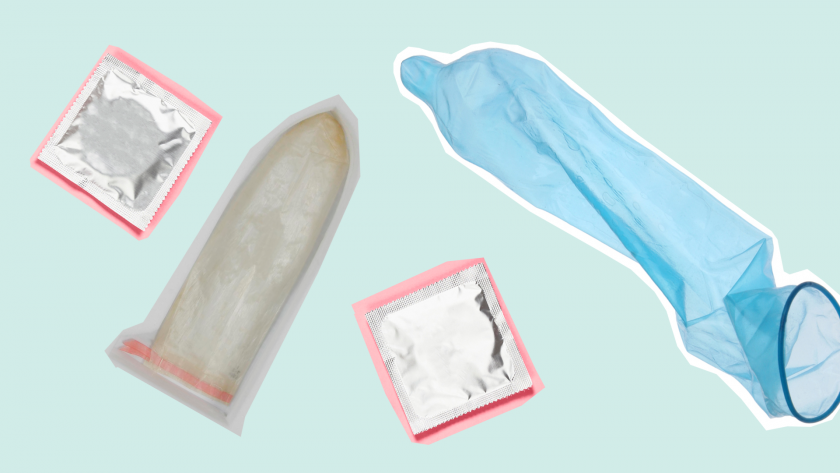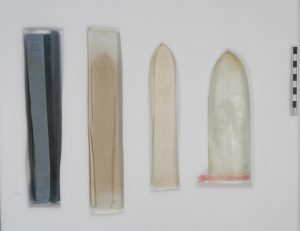
To sheath or not to sheath? An age-old question.
The answer is yes to sheath, and that’s been the answer since ancient history.
In celebration of National Condom Day (our favourite day of the year!), we thought we’d take a trip through history and tell you just how the modern-day condom came to be and where it may have come from.
Protecting yourself from sexually transmitted infections (STIs) by using condoms is nothing new. But just like many technologies, condoms have evolved over time. The materials used to make them have changed throughout history—from oiled silk paper and animal membranes to latex and beyond.
Have you ever wondered how the modern-day condom came to be?
Early history of condoms suggest that they were made out of animal intestines. We’re talking sheep, calves and goats.
In China in the 15th century, oiled silk paper or lamb intestines were used!
While in in the Muromachi period (1338 – 1573) hard sheaths made of tortoiseshell, horn and thin leather began being used.
Animal skin condoms of the 18th century could also feature ribbons to keep them on, see the English condoms below. P.S. SHINE SA’s Library has an animal skin condom you can come check out (sadly not to be borrowed)!
One of the first written descriptions of the condom as protection again STIs was in 1564 by Gabriello Fallopio. Fallopio was an Italian anatomist who wrote a book on the syphilis outbreak in Europe. He described a linen sheath designed to fit the glans (penis) that was soaked in substances including mercury to help protect against syphilis. Don’t try this at home!
It wasn’t until 1855 that rubber condoms were produced and then in the mid-1930s liquid latex became the material of choice, bringing along improved efficacy as well as shelf life (from 3 months to 5 years!).
For those interested in Greek Mythology, the internal condom (also called the vaginal condom or female condom) is rumoured to have started in ancient Greece with King Minos who was the victim of a curse which resulted in him ejaculating snakes and scorpions which killed his sexual partners! To combat this, a physician inserted the bladder of a goat into his lovers which caught all the scorpions and snakes before they could harm them.
Fast forward to 1993 and the internal condom was released. Thankfully they’re no longer made from the bladder of a goat – instead they’re made from a synthetic rubber.


Condoms, 1790-1810.
More condoms from animal guts!
Described as “Contraceptive sheaths; two; animal membrane; one with pink ribbon to secure (a); wrapped in white paper; outer blue paper cover.”
Image source: The Trustees of the British Museum

Condom, England, London, England, 1901-1930.
This is a condom made out of animal gut!
Image source: Science Museum Group.

Safety can be fun poster, Switzerland, 1992.
Image source: Wellcome Collection
What do we love about the modern-day condom?
We might have come a long way when it comes to the production of condoms, but one thing we know for sure is that they are still the MVP when it comes to protecting yourself against STIs.
We love the modern-day condom because:
- they’re easy to access (you can buy them at most supermarkets, petrol stations or online)
- they reduce the risk of STIs
- when used correctly they are between 88-98% effective in preventing pregnancy
- they’re versatile! Condoms can be used with sex toys, anal sex, oral sex or vaginal sex.
While condoms have long been a staple of safer sex, dental dams—thin sheets of latex or polyurethane—offer protection during oral sex, helping to reduce the risk of STIs while keeping pleasure on the menu.
P.S Pairing condoms with a water-based lube can reduce friction which prevents condom breakage and makes sex more comfortable and pleasurable!
References
Pandya, I., Marfatia, Y., & Mehta, K. (2015). Condoms: Past, present, and future. Indian Journal of Sexually Transmitted Diseases and AIDS, 36(2), 133. https://doi.org/10.4103/0253-7184.167135
Tsaraklis, A., Karamanou, M., Androutsos, G., Skandalakis, P., & Venieratos, D. (2017). Preventing syphilis in the 16th century: the distinguished Italian anatomist Gabriele Falloppio (1523-1562) and the invention of the condom. PubMed, 24(4), 395–398. https://pubmed.ncbi.nlm.nih.gov/29286023
History of condoms from animal to rubber. (2014, November 19). Wellcome Collection. https://wellcomecollection.org/stories/condoms-beneath-the-sheath
The wrap up: A brief history of condoms | Ending HIV. (2023, July 25). Ending HIV. The Wrap Up: A Brief History of Condoms | Ending HIV










